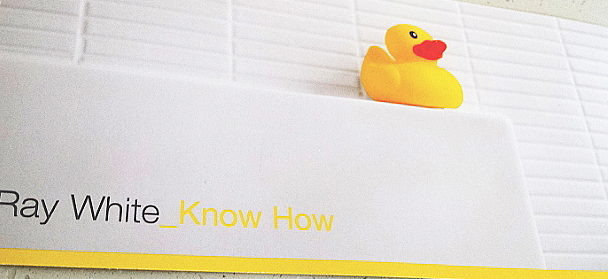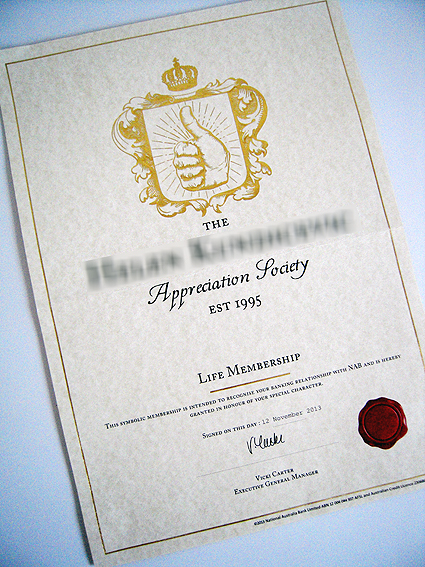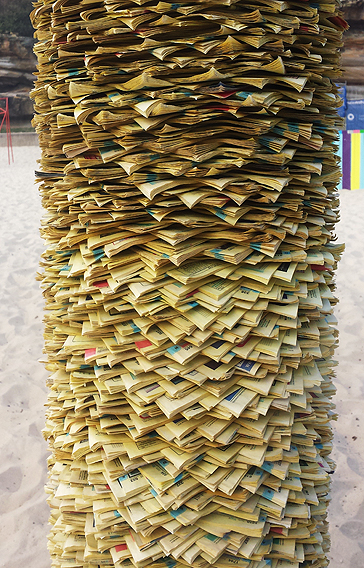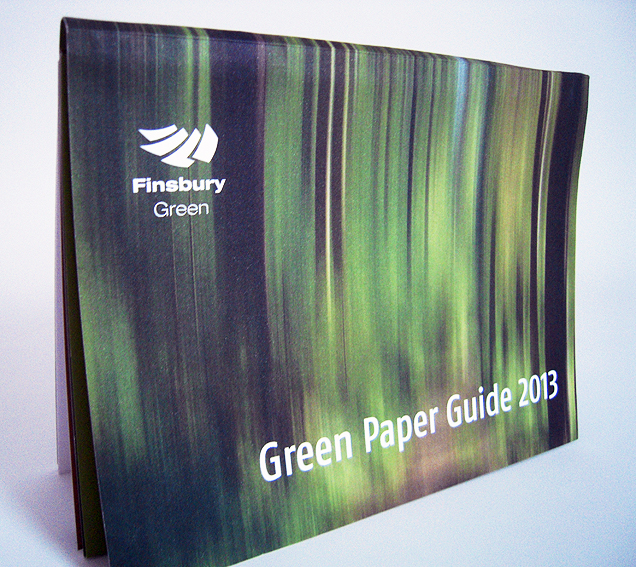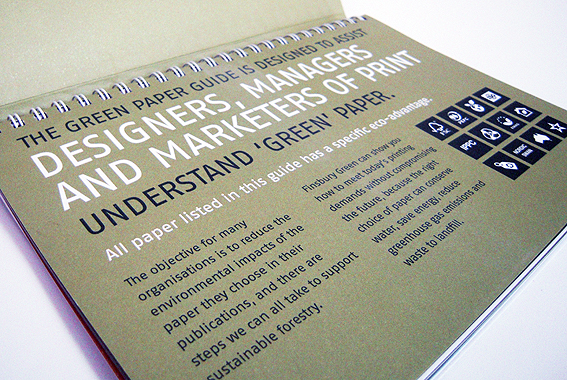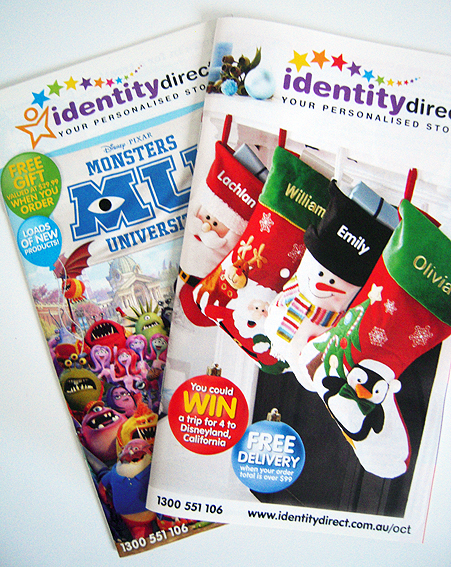
It’s not so much the paper objects here that are of interest – although the catalogues themselves are perfectly fine examples of the form – but rather what they are selling that catches the eye. This is print personalisation run riot.
There’s been a lot written in recent years about the confluence of digital technology and print, and how this offers the potential for new markets based on one-to-one communication. In some respects, none of this is new; a bill is a one-to-one communication, albeit not a very personal one.
The main change though has been the development of faster, higher quality and full colour digital presses capable of printing every single copy differently. Instead of the old print model whereby, typically, hundreds or thousands – maybe millions – of copies would be printed and everybody got the same thing whether they wanted it or not, the new model (the paradigm if you wish) is predicated on the idea that everybody only gets print that is tailored specifically to their tastes and preferences.
I’ve written about it before in relation to this Coles flyer, for instance.
Typically, personalisation is discussed in terms of marketing collateral and corporate communications, developing printed material that is more targeted that a simple ‘Dear [insert name]’. The idea is that the more personalised the communication is, the more successful it will be in actually conveying its message and triggering the appropriate response.
That’s not what this personalised print is all about. In fact, in the eyes of many commercial printers, I doubt if it would even be regarded as print (most of it is not on paper at all). But it is, and it’s amazing.
The Identity Direct premise seems to be that there is virtually no object in the world that cannot be improved by the simple addition of a person’s name. Some of these items are fairly standard, such as engraved pendants and key rings, but beyond that the personalisation spreads much further – into the kitchen (personalised chopping boards), the dining room (personalised place mats), the bathroom (personalised toiletry bags), down the hallway (personalised doormats) and into the backyard (personalised barbecue tools).
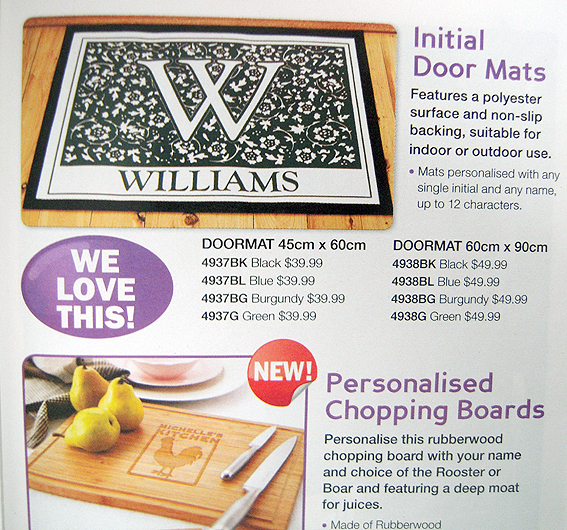
Then, of course, there are the myriad combinations of labels and stickers suitable for plastering over everything from top (hats) to bottom (shoes). The typical school challenge to ‘Please make sure everything is labelled’ is here met with gusto.
I imagine that living in an Identity Direct household must feel like a constant affirmation of one’s existence, a narcissist’s dreamworld. Christmas, in particular, is a very special time of year (for you, you, you and you) with its own personalised Christmas tree skirt, Santa cushions and tree baubles.
Interestingly, perhaps the only items that a conventional printer might recognise as ‘proper print’ are the personalised story books. Here, the personalisation takes the form of a typical data merge whereby standard information such as name, birthday and address is inserted into the text at the appropriate point. There’s even a photo book option using the image of a face.
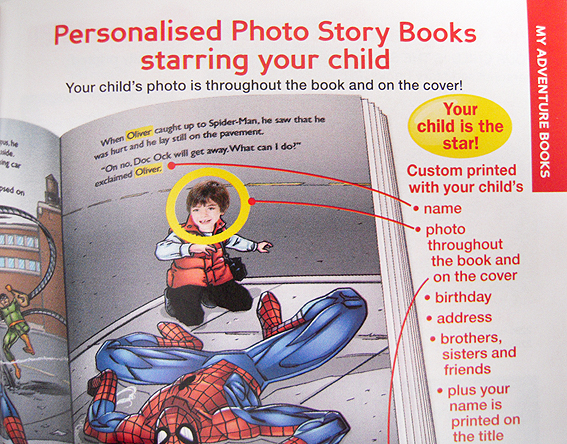
This is print very much of its time: not the mass communication tool of old which derived its strength from the fact that it enabled lots of people to read the same thing at the same time, but rather print for the i-society, a culture based on the primacy of the individual in which personal identity is everything. It’s not enough just to read a book now; you actually have to be in it.


